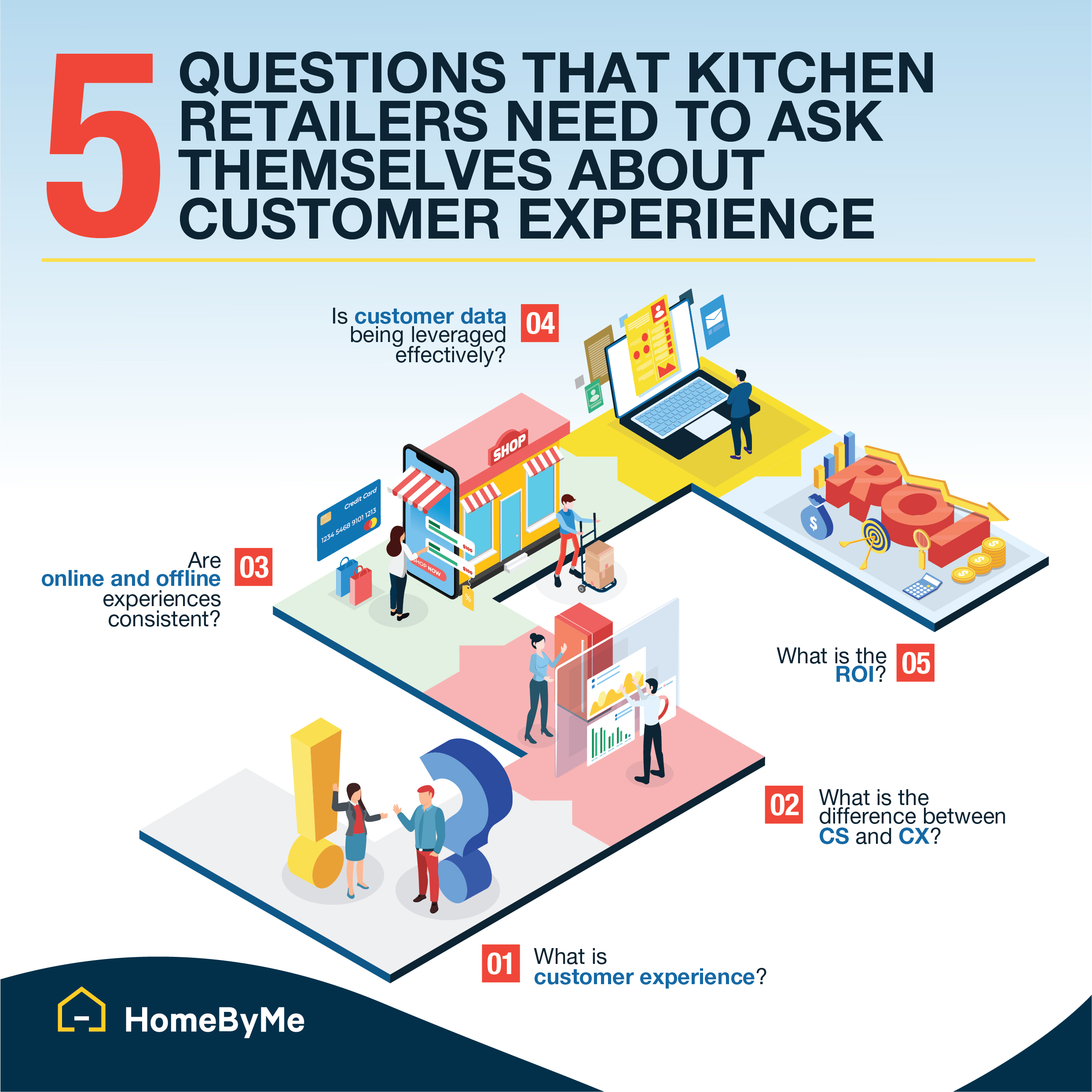Customer Experience June 15, 2020
What customer experience means to kitchen retailers and why it matters to get it right

The term ‘customer experience’ or ‘CX’ has long evolved from the meeting room buzzword it once was. It is integral to any successful brand strategy.
The reason is simple – better customer experiences result in higher customer satisfaction and more sales.
For the kitchen retailer, this requires new and innovative ways to adapt their product offerings and brand messaging in order to differentiate their experience from the competitions’. By utilizing tools such as 3D planning solutions, kitchen retailers can offer standout customer experiences that focus entirely around the needs and preferences of customers – adopting an approach that places the customer at its heart.
The business benefits of a successful customer experience strategy
Kitchen retail is a highly competitive sector where price remains a key buying factor for consumers. To remove themselves from this ‘race to the bottom’, improving customer experiences is key.
Research by The Temkin Group showed that companies with annual revenues of USD 1 billion can expect to earn, on average, an additional USD 700 million within three years of investing in customer experience. But the benefits do not stop there. According to McKinsey, customer experience helps to build brand loyalty, improve the happiness of employees, and can reduce operational costs by between 15 and 25 percent within two to three years. Customers also place a high value on their experiences both in-store and online, with 60 percent saying they would even pay more to receive a better experience.
So, it is clear a customer-centric strategy can pay large dividends for kitchen retailers. But where to start when planning to make that all important investment?
5 questions that kitchen retailers need to ask themselves about customer experience

5 Questions About Customer Experience
pdf - 1.29 MB- What is customer experience and why does it matter?
Customer experience is the product of all the interactions that take place between an organization and a customer over the duration of their relationship. Each interaction is extremely important as it contributes to the overall opinion consumers have of the brand, ultimately influencing whether they make a purchase, how much that purchase is worth, and how likely they are to return and make another.
- What is the difference between customer experience and customer service?
Simply put, customer experience is a proactive strategy that shapes the customer journey ahead of a purchase being made, using data and insight into customer buying habits and preferences. Customer service is purely reactive, responding to either a sale that has already been made or queries that have been raised by the customer. A customer experience strategy essentially preempts these questions, focusing on providing customers with everything they need for a seamless purchase journey.
- Are customer experiences across online and offline channels consistent?
Consumers are increasingly using a combination of devices and channels to carry out product purchases, demanding a seamless, cohesive omnichannel experience to move between online/in store interactions. Embracing digital is something that kitchen retailers can no longer ignore if they are to accelerate the sales cycle and increase revenue.
- Is customer data being leveraged effectively?
Today, there is more customer data available to kitchen retailers than ever before, but the difficulty lies in dissecting that data and turning it into actionable insight. Data is essential to any customer experience strategy, mapping clear customer behaviors for informed business decisions and personalized sales and marketing tactics.
- What is the ROI of improving the customer experience?
This answer will depend entirely on the kitchen retailer. However, with an increase in revenue as high as 70 percent reported over a three-year period, the financial benefits alone are very exciting. In addition, investing in the customer experience improves the overall relationship that consumers have with brands, developing an in-depth understanding of their motivations and needs when remodeling their homes.
Utilizing 3D planning to optimize customer experiences online and in store
Kitchen retailers have a host of tools and solutions that can be leveraged for quick and impactful results on the overall customer experience. The best example of this is a cloud-based 3D planning solution such as HomeByMe for Kitchen Retailers, which provides an interactive platform where customers can create and manage their kitchen remodeling projects from any location.
With features such as product set recommendations, automated design rules and integrated editors, alongside a comprehensive digital product catalog, kitchen retailers can keep customers fully engaged throughout the entire design process. This allows sales staff to fully focus on selling and not troubleshooting design ideas, freeing up resource to increase the number of customers that can be serviced per day.
Additionally, kitchen retailers can gain access to real-time data via the platform – providing insight into customer demographics, average order values, most popular products and sales conversion rates.
Conclusion
With competition high, kitchen retailers simply cannot afford to overlook investment in the customer experience. By fully leveraging customer data and technology solutions such as 3D planning, retailers can adopt a full 360-degree view of their customers, informing strategies to accelerate the sales cycle, improve satisfaction and fuel sustainable business growth.
5 Questions About Customer Experience
pdf - 1.29 MB

